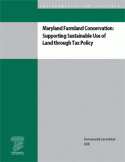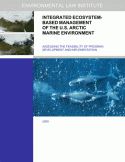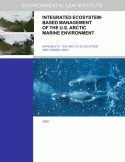
Research Reports
ELI publishes Research Reports available for free download that present the analysis and conclusions of the policy studies ELI undertakes to improve environmental law and policy. These reports contribute to education of the profession and disseminate diverse points of view and opinions to stimulate a robust and creative exchange of ideas. Those publications, which express opinions of the authors and not necessarily those of the Institute, its Board of Directors, or funding organizations, exemplify ELI’s commitment to dialogue with all sectors.
December 2008
Maryland’s population is increasing rapidly while the state continues to lose its agricultural lands. This study explores Maryland’s primary tax measures affecting agriculture, the agricultural use assessment (AUA) and the agricultural land transfer tax (ATT), in order to determine whether these related tax programs could be improved in ways that would encourage farmland protection while continuing to benefit farmers’ bottom lines.
Read More >
November 2008

November 2008

June 2008
Water resources and infrastructure management have a great deal to do with sustainable development of our communities. ELI and 10,000 Friends of Pennsylvania explore working examples of collaborative municipal and regional approaches to water resources and infrastructure management in a new publication.
Read More >